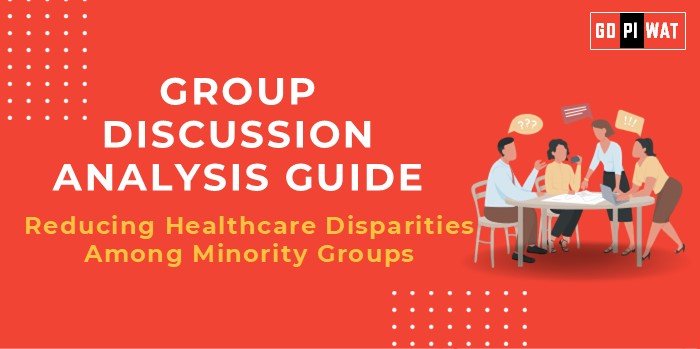📋 Group Discussion Analysis Guide: Reducing Healthcare Disparities Among Minority Groups
🌟 Introduction to Reducing Healthcare Disparities
- Context Setting:
“Globally, healthcare disparities have been a persistent challenge, particularly among minority populations, who often face systemic barriers to equitable care.” - Topic Background:
Disparities stem from socioeconomic factors, cultural barriers, and structural inequities in healthcare systems. Tackling these disparities is critical for achieving Sustainable Development Goal 3: Good Health and Well-being.
📊 Quick Facts and Key Statistics
- 💸 Minority Healthcare Access: Over 40% of minority groups report delays in receiving care due to financial constraints (WHO, 2023).
- 🕑 Life Expectancy Gap: Minority populations in the U.S. experience a 3-7 year lower life expectancy than majority groups (CDC, 2022).
- 🌍 Global Funding Gap: Developing countries face a $25 billion shortfall in funding for equitable healthcare (World Bank, 2023).
- 🧠 Mental Health Care Access: 25% of minorities report unmet mental health needs compared to 12% of majority populations (APA, 2023).
🔗 Stakeholders and Their Roles
- 🏛️ Governments: Policy creation, subsidies, and inclusion of minorities in national healthcare plans.
- 🏥 Healthcare Providers: Training on cultural competency and equitable care.
- 🌍 NGOs and Advocacy Groups: Campaigns for awareness and localized support.
- 👥 Communities: Engaging in outreach and trust-building efforts.
🏆 Achievements and Challenges
✨ Achievements:
- ✅ Community Health Initiatives: Programs like “Healthy People 2030” have successfully reduced certain health disparities by 15%.
- 🌍 Global Examples: Cuba’s universal healthcare system effectively minimizes racial disparities in infant mortality.
- 📡 Technology-Driven Solutions: Telemedicine platforms have improved access for rural minorities in India and Africa.
⚠️ Challenges:
- 📉 Systemic Racism: Implicit biases lead to differential care in clinical settings.
- 💰 Economic Barriers: Out-of-pocket expenses deter healthcare utilization.
- 🌄 Geographical Inequalities: Rural areas often lack healthcare infrastructure.
- 🌍 Global Comparison: Scandinavian countries lead in equitable care through state-funded healthcare, but models are hard to replicate in resource-limited settings.
💡 Structured Arguments for Discussion
- Supporting Stance:
“Reducing disparities ensures economic benefits by enabling a healthier workforce and lowering long-term healthcare costs.” - Opposing Stance:
“Achieving equity requires substantial funding and systemic reforms, which may be challenging for developing economies.” - Balanced Perspective:
“While tackling disparities is vital for ethical and social reasons, resource allocation and cultural resistance remain obstacles.”
🎯 Effective Discussion Approaches
- Opening Approaches:
- 📊 “With minorities experiencing 2x higher mortality rates for preventable diseases, addressing disparities is an urgent need.”
- 📖 “Cuba’s success in reducing infant mortality through equitable care offers lessons for tackling disparities globally.”
- Counter-Argument Handling:
- 🔄 “While funding is a concern, reallocation from inefficiencies in healthcare systems can bridge gaps.”
📈 Strategic Analysis of Strengths and Weaknesses
- 💪 Strengths: Emerging telemedicine solutions; growing awareness of disparities.
- 🛑 Weaknesses: Financial constraints; mistrust in healthcare systems.
- 🌟 Opportunities: AI-driven healthcare; community-based interventions.
- ⚡ Threats: Resistance to systemic change; geopolitical instability affecting aid.
🎓 Connecting with B-School Applications
- Real-World Applications: Projects on healthcare supply chain optimization or policies for healthcare equity.
- Sample Interview Questions:
- 💬 “How can telemedicine bridge the healthcare gap for minorities?”
- ⚙️ “What role do public-private partnerships play in healthcare equity?”
- Insights for Students:
- 📊 Leverage data analytics for identifying and addressing disparities.
- 🌍 Explore global healthcare models for scalable solutions.


